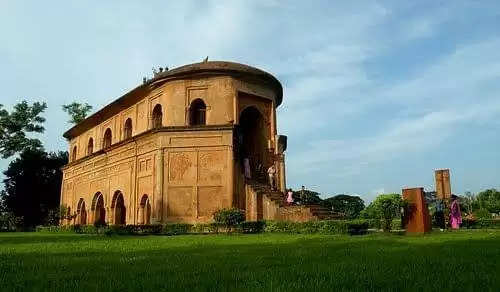Assam: The legend behind one of Asia’s largest and oldest amphitheaters, Rang Ghar

The Rang Ghar literally translated to ( "House of Entertainment") is known to be the largest and among the oldest surviving amphitheaters in Asia. The building was constructed during the reign of Swargadeo by Pramatta Singha in AD 1744-1750.

It is a two-storied building which once served as the royal sports-pavilion where Ahom kings and nobles were spectators at games like buffalo fights and other sports .

Sivsagar is an important cultural center where the various tribes including Missings, Deoris also celebrate Bihu in their own way, particularly during the Rongali Bihu.


As a distinctive work of Tai Ahom Architecture , it did use a mixture of rice and eggs paste as mortar for their construction, pulses called Maati Maah Assamese and fish with the name Borali Mach in Assamese language. They also made use of powdered mixed lime and bricks to cover the surface of the inner walls to keep the temperature cool.


Rang ghar occupies a very special place in the hearts of people and their daily lives can be exemplified by its presence.

A special postcard was also released featuring the Rang Ghar.

Rang Ghar had also served as the logo for the 33rd National Games which were held in Guwahati.
Image : Bijitdutta.wordpress.com, Explore My Trip, internet sources

















